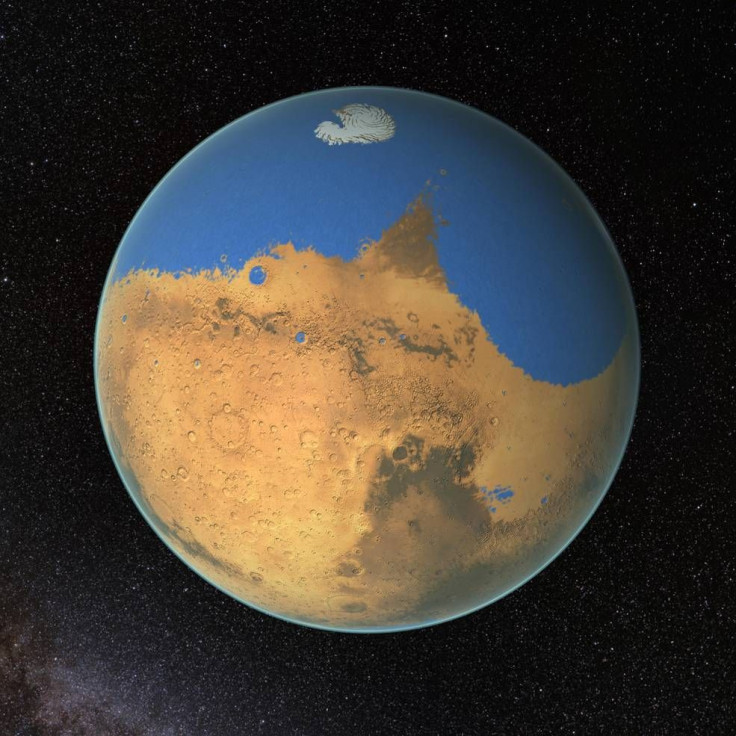Water On Mars: Researchers Link Lomonosov Crater To Ancient Martian Tsunamis

Mars, despite its current rusted and parched appearance, was once a world where water flowed freely. Detailed observations of the red planet’s atmosphere and surface have led scientists to speculate that perhaps about 3.8 billion years ago, Mars had enough liquid water to form an ocean occupying almost half of its northern hemisphere.
Now, in a study published Saturday in the Journal of Geophysical Research Planets, a team of researchers has argued that not only did Mars have an ocean in its northern hemisphere three billion years ago, parts of the planet may even have experience powerful tsunamis. Moreover, the researchers have even identified a crater that they say was created by an asteroid that triggered one such event.
According to the authors of the study, the over 90 mile wide Lomonosov crater, located in Mars' northern plains, was created by an asteroid that, when it struck the said ocean about three billion years ago, triggered tsunami waves reaching heights of nearly 500 feet.
"The possibility that a large ocean once occupied the Martian northern plains is one of the most important and controversial hypotheses to have originated from the exploration of Mars," the researchers wrote in the study. "We mapped lobate deposits, which appear and are potential tsunami deposits associated with the existence of a former ocean. We identified the most probable crater sources of the proposed tsunami deposits from a numerical modeling."
Although scientists have previously proposed the occurrence of tsunamis on ancient Mars, this is the first study to link an event to an impact crater.
The researchers also cited the existence of lobate flow deposits on the Martian dichotomy boundary, which separates the planet's southern highlands from the northern plains, as evidence for a tsunami that pushed waves of water toward an ancient shoreline in the southern hemisphere.
"These lobate deposits propagate uphill from the northern plains and do so in close association with a potential palaeo-shoreline. The predictions of the numerical modelling that François and his colleagues have done provide a very persuasive case for an ocean at this time," study co-author Stephen Clifford from the Lunar and Planetary Institute in Houston, Texas, told BBC News.
This is not the first time scientists have examined evidence for oceans on ancient Mars. Last May, in a study published in the journal Nature Scientific Reports, a team of researchers argued that two mega-tsunamis had wiped out the shorelines of an ocean that existed in the northern hemisphere.
The study, based on images captured by Mars-orbiting spacecraft, posited that over a span of a few million years about 3.4 billion years ago, two meteors crashed into the Martian ocean, triggering 400-foot-high tsunami waves that plowed into its coast and inundated huge swaths of land.
© Copyright IBTimes 2024. All rights reserved.






















